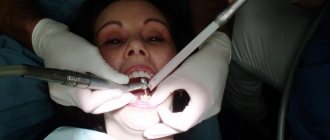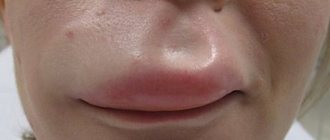Unbearable toothache, sore gums and bad breath require urgent attention from a dentist so as not to aggravate an existing problem.
The initial appointment is carried out by dental therapists. This is a sought-after specialization, since these doctors treat common pathologies of the gums, teeth and oral tissues. A general dentist has a broader range of expertise than a highly specialized orthodontist or surgeon. Such dentists eliminate periodontitis and periodontal disease, relieve pathological changes in the functioning of the salivary glands, treat cheilitis and glossitis (inflammation of the lips and tongue)
A dental therapist not only fills root canals, treats gums or removes tartar. A dentist works to study problems in the maxillofacial area and develop new methods to overcome them.
What diseases does a dentist treat?
At our Dynasty family clinic, dentists practice an individual approach to each patient, depending on the type, origin and dynamics of the disease, and the level of pain threshold.
The main tasks solved by a dentist-therapist:
- Diagnosis and determination of the causes of inflammation, treatment of periodontal disease, periodontitis, periodontoma, gingivitis and periodontitis;
- Treatment and prevention of caries (removal of tartar by the dentist and filling of canals);
- Restoration of mechanical damage to teeth (cracks, chips);
- Elimination of diseases of non-carious origin (pigmentation/erosion or enamel hypoplasia, fluorosis, pulp opening, amelogenesis, root fractures, dentinogenesis, odontogenesis).
At the Dynasty clinic, the dentist-therapist also carries out aesthetic restoration, which allows you to solve all problems within one office, without the involvement of an orthopedist. Without leaving the therapist’s chair, you can restore the front side of the surface of your teeth in two hours using veneers and lumineers (onlays for a “Hollywood smile”) - painlessly, quickly and effectively.
Tooth restoration with a crown using metal-ceramics
An inexpensive solution is a one-piece tooth crown. It is durable and justified for molar prosthetics. The durable frame is covered with layers of ceramics. This design is aesthetic and convenient.
Tooth restoration with a metal-ceramic crown is a budget-friendly and reliable way to maintain the health of your teeth. The cost of a crown is 17,900 rubles per tooth. An impression is made that follows the contours of the natural crown, recording the characteristics of the bite, and a frame is created according to the obtained parameters. Each applied layer of porcelain coating is baked under high temperature.
If there is no healthy root, the tooth has long been removed, there are problems with the structure of soft and bone tissues, then the only way to return to your normal lifestyle and maintain health is implantation. Today there are methods for restoring a tooth crown, completely replacing a lost unit - in my clinic the cost of metal-free options is from 27,900 rubles
for a destroyed restored tooth (and
from 34,900 rubles
for a crown for an implant).
I, Dr. Samsakov, will produce ceramic tooth modules of any complexity, post-core and other types of inlays, “crown plus tooth root” modules using CEREC technology - cost from 27,900 rubles. per tooth The process will take about 1.5 hours.
When should you contact a dentist?
Soviet-era people do not like to visit dentists because they are frightened by the strong association with the “scary drill machine” and severe pain. In medical dentistry, therapists use modern methods and equipment to completely anesthetize the process.
A dental therapist will help in cases where:
- During hygienic cleaning of the oral cavity, bleeding is observed;
- The enamel of the teeth has changed shade;
- Eliminates the cause of the unpleasant odor;
- Damage to the oral mucosa requiring intervention by a therapist;
- There is a constant “aching” pain that intensifies when you press on the tooth;
- Carious cavities appeared in the surface of the teeth and they began to react sharply to cold/hot;
- The gums become swollen and red, or new growths appear on them. The dentist will determine the cause of the inflammation and prescribe treatment;
- Teeth receive mechanical damage or have congenital cosmetic defects;
- Constant “wandering” pain radiating to the ear or temple - the help of a dentist is required immediately.
Useful information: It is recommended to visit a dentist twice a year for a routine examination and teeth cleaning with specialized instruments. Using a laser, the dentist removes mineralized deposits on the surface of the teeth, along with pathogenic bacteria. The procedure even allows you to lighten the enamel a little.
Consequences of poor quality filling
A poorly filled tooth can not only cause an acute reaction of the body, but also a new infection, often with subsequent complications.
What does a bad filling mean?
- inflammation;
- flux and fistula;
- loss of filling;
- change in tooth color;
- allergy to the filling material;
- cyst and granuloma;
- exit of material beyond the root tip.
If you feel acute discomfort after installing a filling, be sure to contact your dentist! Timely consultation with a professional can save you from unpleasant diseases, which are accompanied not only by continuous pain, but also by high costs for their treatment.
Cost of dental services
The dentist provides a wide range of services, so prices depend on many factors: the type of disease and the complexity of its treatment; consumables and number of sessions with the dentist.
Basic cost of services:
- Professional cleaning – 170 rubles;
- Treatment of pulpitis and periodontitis – from 550 rubles;
- Elimination of caries – from 300 rubles;
- Chemical whitening of all teeth – 8,000 rubles.
The full list is in the price list on the website.
If you need professional dental help, our clinic offers the services of specialists with many years of experience.
How can you tell if the filling is installed properly?
To check the installed filling, an additional photograph must be taken, which should show how well the dentist’s work was done. The filling material is highlighted in white, so even a person who does not understand dentistry can understand the picture. Each dental canal should be evenly filled with mixture from start to finish, and there should be no blurring, obvious holes or voids, or foreign objects, which could be a broken instrument.
Carefully check the quality of the work performed, because this is the key to the health of your teeth!
Useful recommendations for oral care from a dentist
The dentist promotes caries prevention and gives basic advice:
- Maintain good hygiene (brush your teeth after eating and floss);
- When brushing, do not forget about your tongue, because germs accumulate on it first;
- Limit your consumption of carbonated and coloring drinks, chips, candies and candies;
- Get a preventive examination at the dentist.
A dental therapist is able to prevent diseases and treat them at an early stage, which will help avoid many problems.
To make an appointment, call the phone numbers listed on the website or use the feedback form.
Materials for filling
After examining the dental canals and carrying out all the necessary treatment procedures, the dentist will have to choose the right material for the future filling. They differ in their elasticity, purpose and properties. Some fillings can disinfect the area nearby, thereby preventing a new disease, while others can only correct the tooth, relieving the patient of discomfort and the entry of food particles into the root canal.
Among the most popular mixtures:
- Gutta-percha
- fills the canals well and is quite elastic, but has shrinkage; - AH-plus
- has an antimicrobial effect, wear-resistant; - Metapex
- has an antibacterial effect; - Akrosil
- often used with gutta-percha; - Forfenan
- is not used for front teeth, as it can stain them, but has a good antibacterial effect.
Today, dentists rarely use only one mixture when installing a filling: this approach is considered ineffective due to the individual characteristics of each solution.
Consult a dentist in Orenburg. How to choose a qualified doctor?
Considering the trends in modern dentistry, where there is a clear focus on maximum specialization, there is an urgent need to improve the qualifications of dentists who do not have the full knowledge that modern patients need. Therefore, to receive comprehensive professional dental care, it is recommended to contact only certified dentists - they will be able to treat you with acute toothache, and will carry out all the necessary procedures to treat pathologies of any complexity.
Indications and contraindications
Implantation cannot be performed at the first visit, only at the request of the patient. In order to install implants, the dentist must confirm the indications for surgery.
Indications include pathologies of the dentition or jaw bones:
- missing one tooth;
- absence of 2 or more dental organs, with adjacent location;
- absence of the last teeth without the possibility of restoration by other methods;
- complete edentia (congenital pathology characterized by the absence of teeth);
- the presence of reasons preventing the wearing of a removable denture (for example, a gag reflex);
- pain caused by functional occlusion;
- absence of alveolar processes in the upper jaw with concomitant complete absence of teeth;
- anatomical defects that arise as a result of diseases, mechanical effects, as well as as a result of disturbances during intrauterine development or genetic predisposition.
In implantology, each case is necessarily considered taking into account the individual characteristics of the dental composition and jaw structure of each patient. An implant can be placed only after diagnosis. A qualified specialist will not carry out the procedure without a preliminary examination.
Contraindications
Diagnostics are necessary not only to confirm the indications, but also to determine the possible presence of contraindications to implantation.
Absolute contraindications for which implants should not be installed include diseases and pathological conditions:
- severe diseases of the cardiovascular system;
- malignant oncological diseases;
- diseases of the nervous system;
- blood pathologies (especially poor clotting);
- severe connective tissue diseases;
- open tuberculosis;
- liver/renal failure during exacerbation;
- increased tone of the masticatory muscles in combination with bruxism;
- diabetes mellitus;
- immunodeficiency diseases;
- allergic reaction to painkillers;
- addiction to drugs or alcohol.
Implantation is not carried out for women carrying a child, as well as for children under 18 years of age. Fixed dentures are not installed until the age of 22. This is due to the fact that until the age of 22, a person’s jaw continues to grow and form. Between the ages of 22 and 25, surgery is performed only for serious indications.
Dentist
It is interesting that in Western countries and America a dentist is a doctor with a higher medical education, but in our country such a specialist is called a dentist. A dentist is considered a specialist with secondary education who has graduated from a technical school or college and completed a three-year internship under the guidance of a dentist.
A dentist can be a dental technician or a dental assistant. The latter helps the dental specialist. The responsibilities of the technician include the manufacture of crowns, various prostheses, and orthodontic products. This is a very complex and delicate work. Dentures and crowns are made from impressions, the model is cast in wax, then in the required material (metal, metal-ceramics), ground and polished. Interestingly, in Germany, dental technicians are not considered medical professionals. They are classified as specialists in precision mechanics, such as jewelers.
Features of complex extraction
First, the doctor conducts a visual examination and palpation, studies x-rays and uses them to assess the condition of the bone tissue and periodontal tissue. Only after a thorough examination of all aspects of the clinical picture can a specialist make a final verdict. Based on the same X-ray image, he determines the number of roots, the shape and depth of their occurrence, and assesses the complexity of the work ahead.
Further, the procedure in most cases is carried out according to the following scheme:
- the surgeon makes an incision on the mucosa to provide direct access to the cervical area,
- if it is necessary to separate the teeth, the doctor saws the crown and root system, after which he literally saws it out of the bone tissue in order to remove the tooth in parts,
- then he lowers special forceps to the very edge of the alveolus, clamps the instrument, fixes it and, carefully twisting or rocking the tooth, removes it from the socket,
- the flap of tissue is returned to its place and sutures are applied.
Complex tooth extraction is a full-fledged operation.
As mentioned above, the procedure can be performed both under local anesthesia and with additional deep sedation. And only in exceptional cases is the use of general anesthesia allowed.










